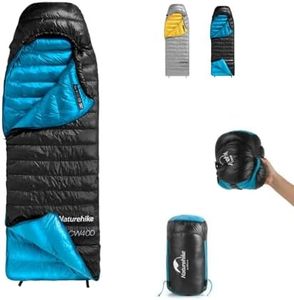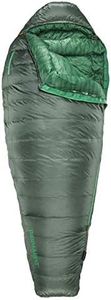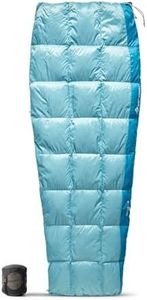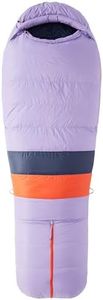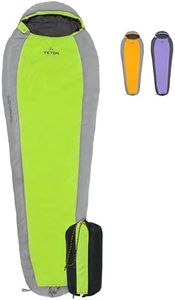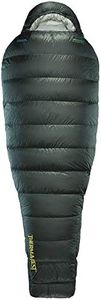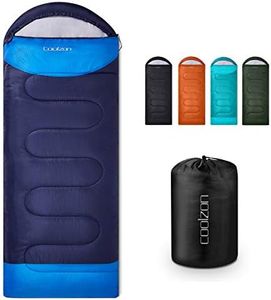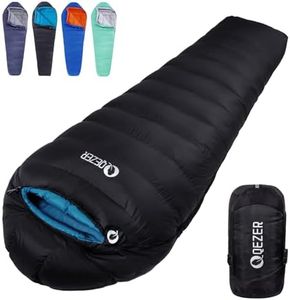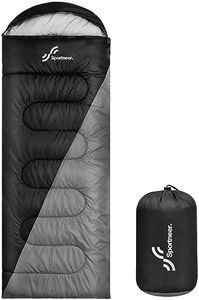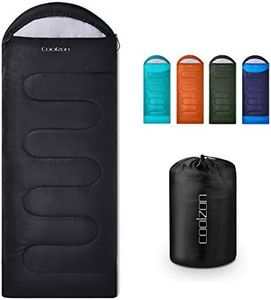We Use CookiesWe use cookies to enhance the security, performance,
functionality and for analytical and promotional activities. By continuing to browse this site you
are agreeing to our privacy policy
10 Best Ultralight Sleeping Bags
From leading brands and best sellers available on the web.Buying Guide for the Best Ultralight Sleeping Bags
Choosing an ultralight sleeping bag is about finding the right balance between weight, warmth, comfort, and packability. Since you’ll likely be carrying this bag for long distances, every ounce and cubic inch counts, but it's also important to make sure it suits your specific sleeping habits and outdoor conditions. Understanding key features can help you match the sleeping bag to your adventures, ensuring restful nights without extra burden in your pack.WeightWeight refers to how heavy the sleeping bag is, and it's a crucial factor for anyone traveling light, like backpackers or thru-hikers. Sleeping bags come in a range of weights, typically between 1 to 3 pounds for ultralight models. Lighter bags are easier to carry but might offer less warmth or fewer features. If you prioritize a light load and travel in warmer climates, opt for bags closer to 1 pound. If you need more comfort or often face chilly nights, a slightly heavier bag up to 2-3 pounds may be better for you.
Temperature RatingTemperature rating tells you the lowest temperature at which the bag is intended to keep a typical sleeper warm. You’ll find ratings like 40°F (summer use), 20°F (three-season), or even lower for colder conditions. It’s important because you want to stay warm but not carry more insulation than needed. Consider the lowest temperatures you expect on your trips. If you mostly camp in summer, a higher rating (warmer temp) is fine; frequenting alpine or shoulder-season trips means you should look for a lower rating to avoid cold nights.
Insulation TypeInsulation is the material inside the sleeping bag that traps heat. The main types are down (goose or duck feathers) and synthetic (manmade fibers). Down is lighter, compresses more, and tends to be warmer by weight, but it's more expensive and can struggle in wet conditions unless it's treated for water resistance. Synthetic bags are bulkier and heavier but work better if they get wet and tend to be less costly. If you hike in dry climates or care about pack size, down is ideal; for damp environments or budget-conscious buyers, synthetic can be a smarter pick.
PackabilityPackability describes how small the sleeping bag can be compressed when packed. Highly packable bags take up less space in your backpack, making them appealing for ultralight travel. Down insulation generally allows for the best packability, while synthetic options are a bit bulkier. Think about your backpack size and how much room you have for a sleeping bag. If every inch counts, prioritize high-packability models; if space isn’t as tight, you can be more flexible.
Shape and FitShape and fit affect comfort, warmth, and weight. Common shapes include mummy (tapered), rectangular, and semi-rectangular. Mummy bags are snug around the body, which keeps warmth in and lowers weight, but they can feel restrictive. Rectangular bags give more space to move but weigh more and aren’t as warm for their weight. Your sleeping style matters here—if you toss and turn, extra room may be worth the weight; if saving weight is top priority, a snug mummy bag will be the most efficient.
Shell Material and Water ResistanceThe shell material is the fabric on the outside of your sleeping bag. Lighter, more technical fabrics save weight but might be less durable. Some shells feature durable water repellent (DWR) coatings that help prevent moisture from soaking in. This is particularly important if you’re camping in damp or unpredictable weather. If you’re mainly in dry conditions, a basic lightweight shell is fine; for wet or variable climates, choose a bag with water-repellent features for extra protection.
